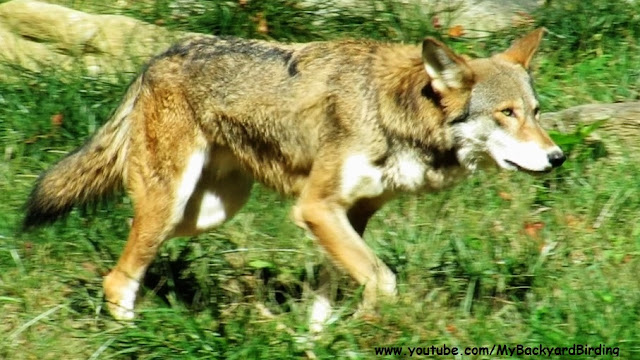Critically endangered Red Wolves only exist in the wild in a small part of North Carolina. Perhaps less than 50 exist in the wild and they are on the brink of extinction.
BASIC FACTS ABOUT RED WOLVES
http://www.defenders.org/
The red wolf is a smaller and a more slender cousin of the gray wolf. It is gray-black, with a reddish cast that gives it the color for which it is named.
Diet
The red wolf’s diet consists primarily of small mammals such as rabbits and rodents. Also known to eat insects, berries and occasionally deer.
Population
Almost hunted to the brink of extinction, the U.S. Fish and Wildlife Service rounded up fewer than 20 pure red wolves to be bred in captivity in 1980. As of 2007, approximately 207 captive red wolves reside at 38 captive breeding facilities across the United States. Thanks to these programs, more than 50 red wolves currently live in the wild.
Range
Historically, red wolves ranged throughout the southeastern U.S. from Pennsylvania to Florida and as far west as Texas. Today, wild populations roam more than 1.7 million acres throughout northeastern North Carolina, including Alligator River National Wildlife Refuge and Pocosin Lakes National Wildlife Refuge.
Red wolves are primarily nocturnal (active at night), and communicate by scent marking, vocalizations (including howling), facial expressions and body postures.
Shy and secretive, red wolves hunt alone or in small packs -- complex social structures that include the breeding adult pair (the alpha male and female) and their offspring. Red wolves tend to form pair-bonds for life.
Size of the pack varies with the size of available prey populations. A hierarchy of dominant and subordinate animals within the pack helps it to function as a unit. Dens are often located in hollow trees, stream banks and sand knolls.
Reproduction
Mating season: Late winter.
Gestation: 60-63 days.
Litter size: 2-8 pups.
New HD videos uploaded frequently. Subscribe at:

No comments:
Post a Comment